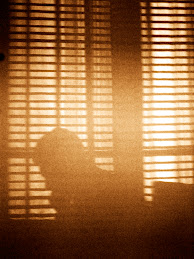



Born in Borgonovo, now part of the Swiss municipality Stampa, near the Italian border, Giacometti moved to Geneva to attend the School of Fine Arts.
In 1922 he moved to Paris to study under the sculptor Antoine Bourdelle, an associate of Auguste Rodin. It was there that Giacometti experimented with cubism and surrealism and came to be regarded as one of the leading surrealist sculptors. Among his associates were Joan Miró, Max Ernst, Pablo Picasso and Balthus.
Alberto Giacometti, Cat, 1954, Metropolitan Museum of Art
Alberto Giacometti, Cat, 1954, Metropolitan Museum of Art
From 1936 to 1940 Giacometti concentrated his sculpting on the human head, focusing on the model's gaze, followed by a unique artistic phase in which his statues became stretched out; their limbs elongated. Obsessed with creating his sculptures exactly as he envisioned through his unique view of reality, he often carved until they were as thin as nails and reduced to the size of a pack of cigarettes, much to his consternation. A friend of his once said that if Giacometti decided to sculpt you, "he would make your head look like the blade of a knife." After his marriage his tiny sculptures became larger, but the larger they grew, the thinner they became. Giacometti said that the final result represented the sensation he felt when he looked at a woman.
His paintings underwent a parallel procedure. The figures appear isolated, are severely attenuated, and are the result of continuous reworking. Subjects were frequently revisited: one of his favorite models was his brother Diego Giacometti.[1]
Giacometti was a key player in the Surrealist Movement, but his work resists easy categorization. Some describe it as formalist, others argue it is expressionist or otherwise having to do with what Deleuze calls 'blocs of sensation' (as in Deleuze's analysis of Francis Bacon). Even after his excommunication from the Surrealist group, while the intention of his sculpting was usually imitation, the end products were an expression of his emotional response to the subject. He attempted to create renditions of his models the way he saw them, and the way he thought they ought to be seen. He once said that he was sculpting not the human figure but "the shadow that is cast."
Scholar William Barrett in Irrational Man: A Study in Existential Philosophy (1962), argues that the attenuated forms of Giacometti's figures reflect the view of 20th century modernism and existentialism that modern life is increasingly devoid of meaning and empty. "All the sculptures of today, like those of the past, will end one day in pieces... So it is important to fashion ones work carefully in its smallest recess and charge every particle of matter with life."
Source: Giacometti wikipedia s page




Aucun commentaire:
Enregistrer un commentaire